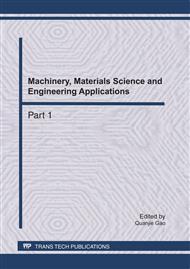p.853
p.858
p.864
p.869
p.874
p.878
p.883
p.889
p.894
Laser Ablation of Alumina Ceramic in Sodium Hydroxide Solution with Nd:YAG Laser
Abstract:
In this paper, alumina ceramic samples were ablated with HGW-300 solid laser in sodium hydroxide solution medium. The morphology and structure of the ablated surface were investigated by SEM and XRD. The results show that, the mass loss increased with increased processing voltage. With the laser scanning speed increasing, the mass loss of alumina ceramic sample decreasing. While pulse width is 1.4ms, the mass loss of the sample gets maximum.When the repeat frequency is 40Hz, the mass loss of the sample in 20g/L sodium hydroxide solution reaches a maximum and then drops down. Corrosive medium can increase the mass loss of alumina. When the samples were tested in 20g/l sodium hydroxide solution, their mass losses is higher than in any other solutions.
Info:
Periodical:
Pages:
874-877
Citation:
Online since:
April 2011
Authors:
Keywords:
Price:
Сopyright:
© 2011 Trans Tech Publications Ltd. All Rights Reserved
Share:
Citation:


